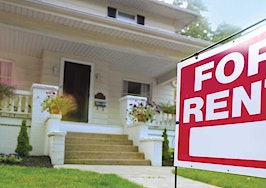The largest share of baby boomers are a decade away from moving past age 65 and into their very senior years. Nevertheless, time in running out to prepare for their housing, financial, social and medical needs, according to a new report from the Harvard Joint Center for Housing Studies.
The 44-page report, Housing America’s Older Adults, says boomers — the leading edge of which will soon turn 80 — will increasingly need more accessible and supportive housing than currently available.
It also warns that many households in their 50s and early 60s may not be prepared financially for retirement. Fewer of these households are homeowners or have the wealth of their predecessors at the same age, the report adds.
“We need to address gaps in the affordability and accessibility of our housing stock,” says lead author Jennifer Molinsky, pointing out that both are essential for older adults’ independence and well-being. “As the number of households in their 80s grows, it will be essential that we strengthen the links between housing, healthcare and other services.”
The report is a supplement to the Joint Center’s annual State of the Nation’s Housing. It analyses demographic, financial and geographic trends, and the report concludes that it will take a concerted and coordinated effort on the part of governments at all levels, along with public and private partners, to meet the challenges that lie ahead.
Some of the lowlights:
- Nearly a third of 9.7 million older households age 65 or above pay at least 30 percent of their incomes for housing. Worse, more than half of these 3 million or so seniors pay more than half their incomes to put a roof over their heads.
- Senior renters don’t have the riches their owner counterparts have accumulated over the years. Owners age 50 to 64 had a net median net worth of $292,000 in 2016, almost 60 times that of same-age renters. And the difference in wealth between owners and renters 65 and older is nearly as large.
- The median incomes of older folks grew in the past five years, probably because more and more of them have to work to supplement their retirement funds. But the gains were uneven. From 2011 to 2016, median incomes rose nearly 10 percent for those seniors age 65 to 79 and just over 5 percent for those 80 and above. At the same time, those between 50 and 64 saw their incomes rise by less than 3 percent.
- The racial divide is historically high. More than 4 of 5 — 81 percent — white households age 50 and over own their homes, while just 57 percent of their black counterparts are owners. The 24 percentage point gap is the largest disparity since the study began in 1976.
- Providing the services seniors need is most difficult in locations with low-density housing such as rural areas and small towns, yet the share of oldsters living in locations where housing is widely dispersed rose from 24 percent to 32 percent in 95 of the largest 100 metro regions between 2000 and 2016. That’s an increase of nearly 6 million adults.
- As people age, they often become more infirm, in many cases requiring accessible housing. For example, in 2016, 17 percent of 50 and older households included someone who had difficulty walking or climbing stairs. But according to the most recent estimates available, only 3.5 percent of all houses had the three key features necessary for those with mobility challenges: single-floor living, no-step entries and extra-wide doors and hallways that can accommodate a wheelchair.
- By the time people reach 80 or more, they tend to lose a spouse and end up living alone. Indeed, 57 percent of owners who age or above reside by themselves, as do 77 percent of renters. These super seniors are most vulnerable and even more so when they live alone. They often need support services or care and rely on paid care givers, yet they have lower incomes.
“The urgency and magnitude of need requires that efforts be scaled up dramatically,” the report warns.
“Changes in policies at the local, state and federal levels are necessary to increase the nation’s supply of appropriate and affordable housing, modify existing housing to support persons with disabilities, expand transportation options and improve the integration of housing, services and care.”
Jessica Lautz, director of demographics and behavioral insights at the National Association of Realtors, says the giant trade group’s findings square with those of the Joint Center. “The U.S. housing stock is unprepared to meet the demands of older adults,” she said in a statement released to Inman.
To help combat the growing problem, NAR’s Realtor University has hosted numerous speakers from the AARP and the Joint Center. New research from NAR shows that more than a third of buyers over age 65 plan to age in place, and one-quarter won’t move out of their current residences unless their health issues dictate, Lautz reported.
To expand the array of housing options, the Joint Center calls for the production of more diverse and flexible housing, including mixed-use properties and units located near needed services and amenities.
It also wants local authorities to allow builders to erect smaller units, including accessory dwellings, and promote the construction of more rental housing in suburban locations so older adults can stay in their current and more familiar locations.
Other possibilities suggested in the report include housing that promotes intergenerational living and the creation of federal and/or state tax breaks and other incentives to reduce older seniors’ housing costs and allow them to modify and maintain their existing residences so they can remain in them.
“The largest impacts of the demographic shift are still a decade or more off,” the report says. But “given the scale of challenges ahead, the time to act is now.”
Lew Sichelman’s weekly column, “The Housing Scene,” is syndicated to newspapers throughout the country.













